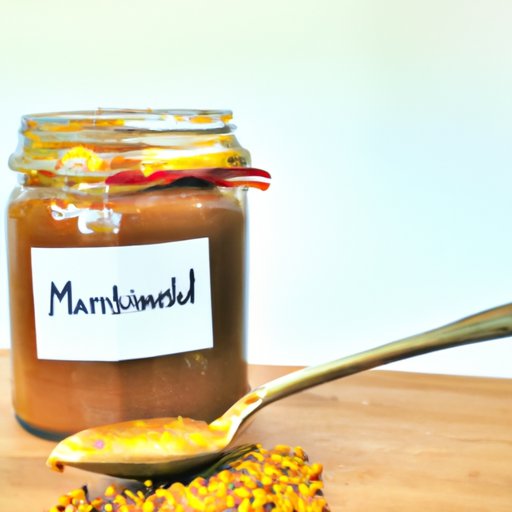
I. Introduction
Mustard is a classic condiment that can add a tangy kick to any dish. While store-bought varieties are readily available, making mustard at home can be a simple and rewarding experience. In this article, we will outline how to make mustard in five easy steps, introduce ways to add different flavors and ingredients to your homemade condiment, delve into the health benefits of making mustard from scratch, explore the cultural history of mustard-making, and provide tips for incorporating homemade mustard into your everyday cooking.
II. 5 Simple Steps to Making Homemade Mustard
First, gather the necessary ingredients and tools:
- 1/3 cup mustard seeds
- 1/2 cup apple cider vinegar or white wine vinegar
- 1/2 teaspoon salt
- 1 tablespoon honey (optional)
- Blender, food processor, or mortar and pestle
- Clean glass jar with lid
Next, follow these five easy steps:
- Soak the mustard seeds in vinegar for 24-48 hours in the refrigerator. The longer the seeds soak, the less pungent the mustard will be.
- Add salt and honey (optional) to the soaked mustard seeds.
- Blend the mixture until it reaches desired consistency. For a grainy mustard, blend for less time. For a smoother mustard, blend for longer.
- Transfer the mustard to a clean glass jar and refrigerate.
- Enjoy homemade mustard on sandwiches, burgers, dressings, marinades, and more!
Making homemade mustard is simple and versatile. You can experiment with different types of vinegar, sweeteners, and added spices to create your own unique flavor profile.
III. DIY Mustard: From Classic to Creative
Once you’ve mastered the basics of making mustard, it’s time to get creative. Here are some ideas and recipes for customizing your homemade mustard:
- Classic Dijon-style: Add 1 tablespoon of crushed juniper berries for a classic French flavor.
- Honey mustard: Add 2-3 tablespoons of honey to the basic recipe for a sweet and tangy twist.
- Sriracha mustard: Add 2-3 tablespoons of Sriracha for a spicy kick.
You can also experiment with different types of vinegar, such as balsamic or champagne vinegar, and add spices like cumin, turmeric, or smoked paprika for an even more complex flavor.
IV. The Health Benefits of Homemade Mustard
Making mustard from scratch has several health benefits:
- No preservatives or unhealthy additives: Store-bought mustard often contains preservatives and unhealthy additives such as high fructose corn syrup, which can have negative effects on our health. Making mustard at home ensures that you have control over the quality of the ingredients and can eliminate harmful additives.
- Anti-inflammatory properties: Mustard contains turmeric, which has anti-inflammatory properties that can help reduce pain and inflammation in the body.
- Potential cancer-fighting abilities: Studies have shown that mustard seeds contain compounds that may have cancer-fighting properties.
By making mustard at home, you can enjoy a flavorful and healthy condiment that you can feel good about.
V. A Brief History of Mustard-Making
Mustard has a long and fascinating history. The ancient Romans were known to grind mustard seeds and mix them with vinegar to create a condiment called mustum ardens, or “burning must.” During the Middle Ages, mustard became a popular ingredient in European cuisine, and mustard-making guilds were established in France and England. Today, mustard is enjoyed around the world in many forms, from yellow mustard in the United States to Dijon mustard in France.
VI. How to Use Homemade Mustard in Your Cooking
Homemade mustard is a versatile ingredient that can be used in a variety of ways:
- Spread mustard on sandwiches or burgers for added flavor.
- Use mustard as a base for dressings and marinades.
- Add mustard to chicken, pork or beef dishes for a tangy twist.
- Use mustard in place of mayo or ketchup for a healthier condiment option.
Experiment with different recipes and share your creations with others!
VII. Conclusion
Making homemade mustard is easy, fun, and rewarding. With just a few simple ingredients and tools, you can create a flavorful condiment that suits your taste buds. Experiment with different flavors and spices, and reap the healthy benefits of making mustard from scratch.





